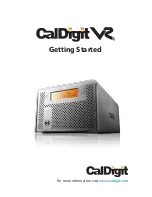
ML365 Virtex-II Pro QDR II SRAM Mem. Board
www.xilinx.com
35
UG066 (v1.0) June 29, 2004
1-800-255-7778
IBIS Simulations
R
IBIS Simulations
This section summarizes the various simulations run on the ML365 Board using IBIS. The
simulations have been completed using the Cadence SPECCTRAQuest tool. These
simulations account for specific PCB characteristics, ensuring high fidelity waveforms. For
each waveform presented in this section, the results of the test conditions are provided.
The simulations have been divided into the following categories:
Data Signal Simulations
♦
Data signals from the FPGA to the QDR II SRAM, U11, Component B, Data D,
Bit 4
-
Typical Case
-
Slow Weak Case
-
Fast Strong Case
-
Eye Diagram
♦
Data signals from the QDR II SRAM to the FPGA, U11, Component B, Data Q,
Bit 4
-
Typical Case
-
Slow Weak Case
-
Fast Strong Case
-
Eye Diagram
Clock Signal Simulations
♦
Clock signals from the FPGA to the QDR II SRAM, U11, Component B
-
Typical Case
-
Slow Weak Case
-
Fast Strong Case
Address and Control Signal Simulations
♦
Address and control signals from the FPGA to the QDR II SRAM Memory
Component
-
QDR II SRAM, U11, Component B, Address Bit 4 (Typical, Slow/Weak, and
Fast/Strong Cases)
Notes on the Simulation Results
The provided waveforms show the results of each simulation. The signals in these
waveforms are color-coded:
•
Purple signal: Typical driver
•
Green signal: Fast/strong driver
•
Blue signal: Slow/weak driver
For the eye diagram, the typical drivers are used.
Product Not Recommended for New Designs
















































